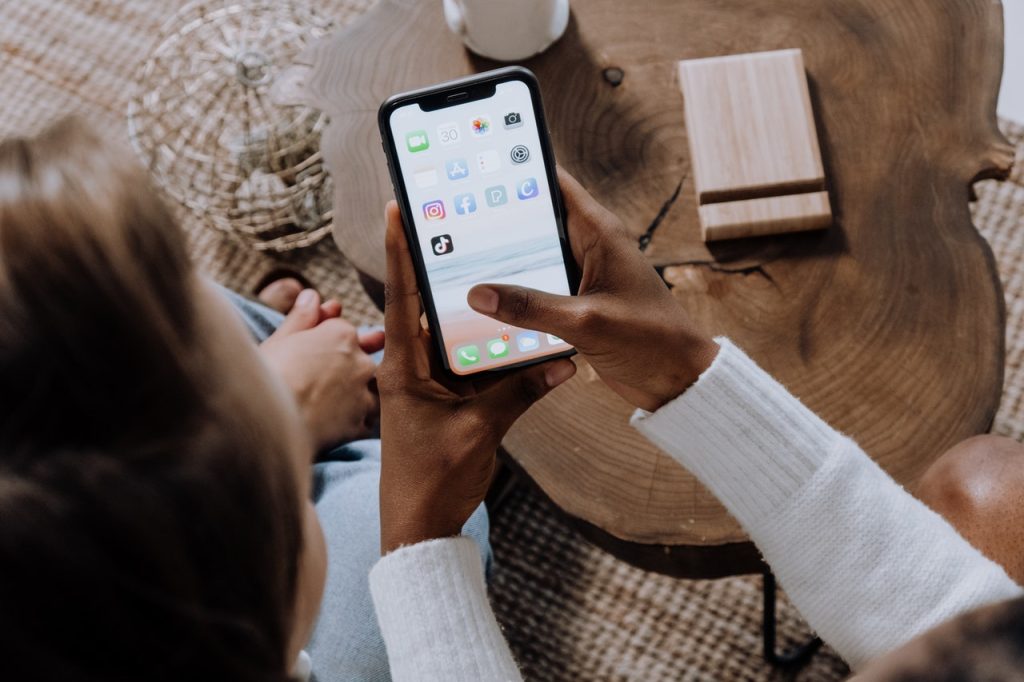Introduction
Digital platforms have become integral parts of modern society especially in regards to the younger generations (Abrahim et al., 2018). For example, Orben (2020) indicates that 69 % of the children aged between 12 and 15 have active social media accounts. On the other hand, more than 50 % of the global population is on social media. This illustrates that people start using social media from a young age which makes them susceptible to learning from content consumed on social media. World Map Showing Social Media Users .
In addition, social media platforms do collect information from the users through tracking their activities while on the platform (Guess et al., 2023). However, TikTok goes on to track digital patterns of their users beyond their applications through trackers installed on devices. This means that as an organization, TikTok has significant big data on its users which can be analyzed and information gained. This essay discusses the various ways through which TikTok monitoring and supervision of its users would impact the lives of users. By collecting user information and utilizing it to calibrate the algorithm, TikTok is able to subtly model the behaviors of their users, influence their purchasing decisions, their perspectives on social agendas, and reinforce beliefs.
Importance of Collecting and Analyzing User Information
Digital platforms tend to collect information from their users in a bid to study and understand user preferences (Bongard-Blanchy et al., 2021). In doing so, the platforms are in a position to provide users with products that satisfy their needs. Furthermore, digital platforms that are able to meet the user preferences through studying them tend to build a significant competitive advantage within their industry. Based on the analyzed information, the platforms utilize an algorithm which continually suggests contents to the users. This algorithm goes on to have both intended and unintended consequences for their users.

“Big Data”by Learntek is licensed under CC BY 1.0.
Modeling Behavior
Users on TikTok tend to behave in a manner that will promote viewership on their accounts (Amrudhia & Nurfebiaraning, 2021). This implies that the users are likely to push themselves towards adopting new behaviors that will bring viewership to their accounts even in the event that these behaviors are not inherent to them. Motivating factors that promote such behavior are the need to become popular, the perspective that one would make money from their social media activities, and the need to fit in socially (Meng & Leung, 2021). For example, Shelby Renae states that she left her work at a Pizza Restaurant to start making content on TikTok. Shelby Renae indicates that she makes videos and gets paid through advertisement and sponsorship. Furthermore, Shelby Renea finds herself constantly looking for the next big and trending topic to create content on it. As a result, the users can find themselves learning certain types of behaviors that are portrayed in the content consumed. Through her efforts, Shelby Renae has been able to achieve 1.3 million followers and 38.3 million likes on her content as shown in Chart 1. Chart 1: Screenshot of Shelby Renae’s TikTok Page
This behavior is affecting TikTok users because they are seeking to become the most popular content creators on the platform because it comes with a sense of monetary rewards. Furthermore, the amount of time that people are spending online continues to increase which limits their productivity.

“Tik-tok-HEAD | @GwynethJones -The Daring Librarian! | Flickr “ by@GwynethJones -The Daring Librarian! is licensed under CC BY 2.0.
Influence Purchasing Decisions
By learning the behaviors and patterns of their users, TikTok algorithm shares this information with third-party entities whose aim is to drive advertisements (Haythornthwaite, 2023). TikTok ability to track their users digital activity outside their website or application implies that they are in a position to gain a comprehensive understanding of their users behavior. Video 1 presents the detailed explanation on how the algorithm is able to suggest content. Video 1: TikTok Algorithm

“Cómo ganar dinero en TikTok | El Correo” by DaniMaiz is licensed under CC BY 4.0
As a result, TikTok algorithm is able to design and direct advertisements in accordance with the illustrated behavior of the users (Chu et al., 2022). This means that advertisements become designed in accordance with the digital patterns people have shown. Consequently, it improves the potential the users will make the purchases because they are bombarded with advertisements that match their preferences and digital patterns. In addition, the algorithm makes suggested advertisements for items related to the items one purchases or interests that one has shown through their digital patterns. Furthermore, through interactions with other TikTok users, it becomes possible to have users perceive a particular product as beneficial to them because they see others with the product. The context of peer pressure and need to socially fit in becomes a deciding factor in for TikTok users concerning which items to purchase. As a result, it is possible that one behavior in terms of purchasing decision becomes influenced by the content viewed on TikTok.

“How To Find Trends For Your TikTok And Reels Videos – Plann” by Plann is licensed under CC BY 4.0
Modeling Perspectives
Users on TikTok tend to gravitate towards the users who have good content and at the same time, they have similar beliefs (Lee et al., 2022). This has resulted in popular accounts becomes social media influences. In this regard, the implication is that the popular social media users are in a position to influence the perspective that their followers have because the followers are appreciative of the content and perspective that the influencers have. Consequently, the implication is that TikTok users can have their modelled in accordance with the accounts which they find interesting on the platform. According to Riedl et al. (2021), there has been a marked increment in social media political influencers who have taken up the role of setting the conversation when it comes to politics. The implication of this is that the users can be influenced to take up a political perspective that is in line with the perspectives of the popular TikTok users. This influence can go beyond the political agenda on to social agendas such as the concept of gender and homosexuality. Similarly, people can be influenced towards taking up a perspective that is not originally their own. Contextually, the implications is that entities can carryout campaigns on social media and effectively influence perspectives and behaviors.
Reinforces Beliefs
On TikTok, the company algorithm provides users with relevant content depending on their analyzed behavior (Lee et al., 2022). This makes the users only experience content that has a defined nature or theme in their messaging. For instance, content suggested tends to follow a defined theme because the algorithm only suggests related content. This means that with time, one is only viewing content that is similar to what they believe or perceive. For example, a person who is interested in sports is likely to get content relating to sport. Furthermore, the content is likely to be centered on a particular sport such that visibility of the particular sport becomes the only one to the individual. This issue can also occur in the negative context and agenda whereby negativity is entrenched and practiced readily. Matamoros Fernandez et al. (2022) indicates that negative stereotypes have been entrenched on TikTok because users are not held accountable. This implies that people with negative belies and contexts have found a way through which they actively practice negativity thereby reinforcing their negative beliefs. Socially, it contributes to a society that is unable to eliminate vices that have had negative implications especially when it comes to the minority communities.
Conclusion
TikTok utilizes the algorithm to present itself with a competitive advantage in the industry. This has achieved the goal of promoting popularity of the platform but at the same time, it is impacting the users in subtle ways. First, users behaviors is influenced by the content they consume and by the desire to gain a large following on the platform. Secondly, the purchasing decision of the users are also influenced by the content consumed due to the contextualized advertisements. Thirdly, users’ perspectives as well as their beliefs are influenced.
References List:
Abrahim, S., Mir, B. A., Suhara, H., & Sato, M. (2018). Exploring academic use of online social networking sites (SNS) for language learning: Japanese students’ perceptions and attitudes towards Facebook. Journal of Information Technology & Software Engineering, 8(1), 1-5. DOI: 10.4172/2175-7866.1000223
Amrudhia, N. F., & Nurfebiaraning, S. (2021). The “9.9 Super Shopping Day” Advertisement Video and Its Impact on Shopee Users on TikTok. Kanal: Jurnal Ilmu Komunikasi, 10(1), 22-27. https://doi.org/10.21070/kanal.v9i3.1227
Bongard-Blanchy, K., Rossi, A., Rivas, S., Doublet, S., Koenig, V., & Lenzini, G. (2021, June). ” I am Definitely Manipulated, Even When I am Aware of it. It’s Ridiculous!”-Dark Patterns from the End-User Perspective. In Designing Interactive Systems Conference 2021 (pp. 763-776). https://doi.org/10.1145/3461778.3462086
Chu, S. C., Deng, T., & Mundel, J. (2022). The impact of personalization on viral behavior intentions on TikTok: The role of perceived creativity, authenticity, and need for uniqueness. Journal of Marketing Communications, 1-20. https://doi.org/10.1080/13527266.2022.2098364
Guess, A. M., Malhotra, N., Pan, J., Barberá, P., Allcott, H., Brown, T., … & Tucker, J. A. (2023). How do social media feed algorithms affect attitudes and behavior in an election campaign?. Science, 381(6656), 398-404. https://doi.org/10.1126/science.abp9364
Haythornthwaite, C. (2023). Moderation, networks, and anti-social behavior online. Social Media+ Society, 9(3). https://doi.org/10.1177/20563051231196874
Lee, A. Y., Mieczkowski, H., Ellison, N. B., & Hancock, J. T. (2022). The algorithmic crystal: Conceptualizing the self through algorithmic personalization on TikTok. Proceedings of the ACM on Human-computer Interaction, 6(CSCW2), 1-22. https://doi.org/10.1145/3555601
Matamoros Fernandez, A., Rodriguez, A., & Wikstrom, P. (2022). Humor that harms? Examining racist audio-visual memetic media on TikTok during COVID-19. Media and Communication, 10(2), 180-191. https://doi.org/10.17645/mac.v10i2.5154
Meng, K. S., & Leung, L. (2021). Factors influencing TikTok engagement behaviors in China: An examination of gratifications sought, narcissism, and the Big Five personality traits. Telecommunications Policy, 45(7), 102172. https://doi.org/10.1016/j.telpol.2021.102172
Orben, A. (2020). Teenagers, screens and social media: a narrative review of reviews and key studies. Social psychiatry and psychiatric epidemiology, 55(4), 407-414. https://doi.org/10.1007/s00127-019-01825-4
Riedl, M., Schwemmer, C., Ziewiecki, S., & Ross, L. M. (2021). The rise of political influencers—Perspectives on a trend towards meaningful content. Frontiers in Communication, 6, 752656. https://doi.org/10.3389/fcomm.2021.752656


